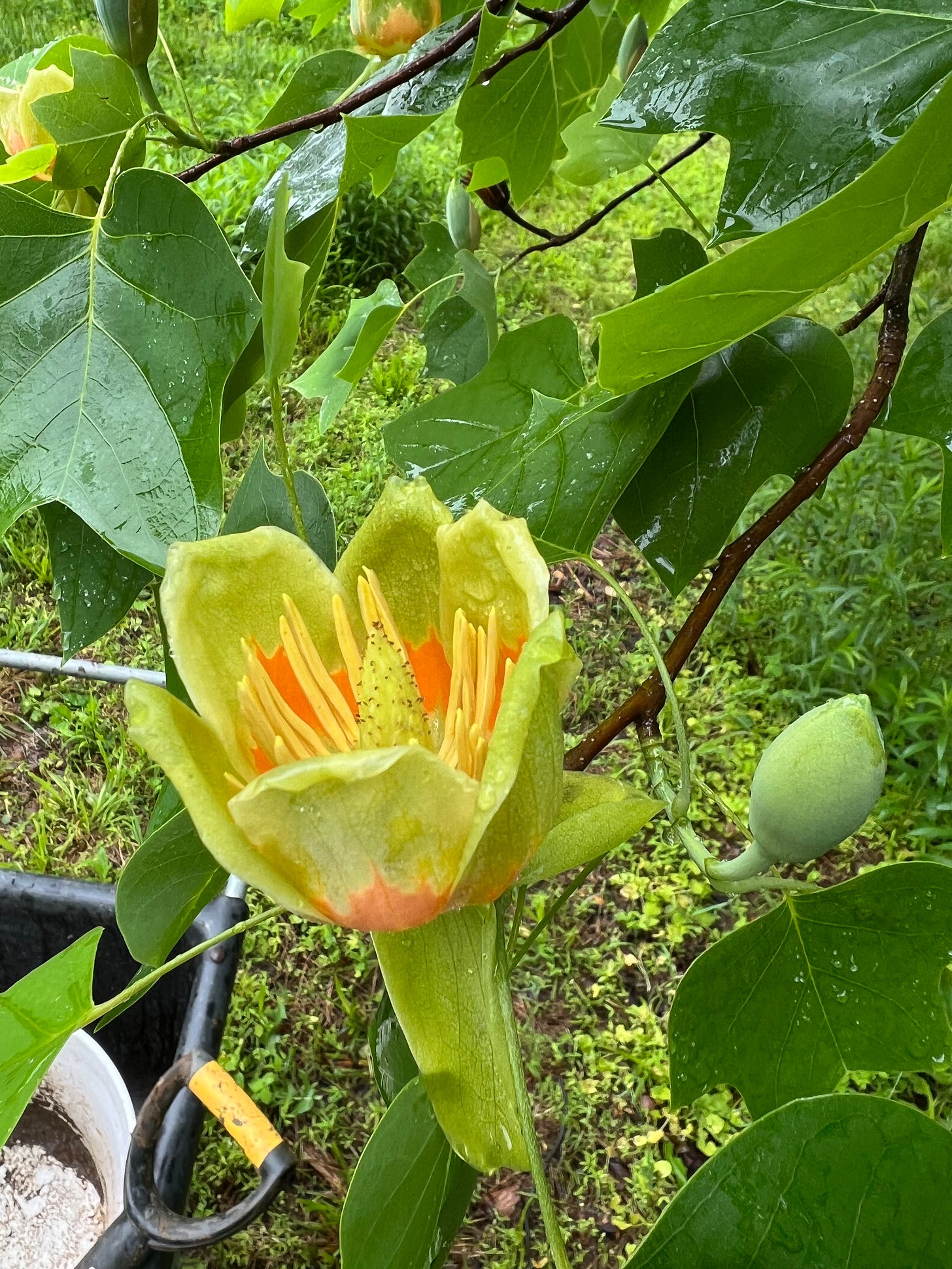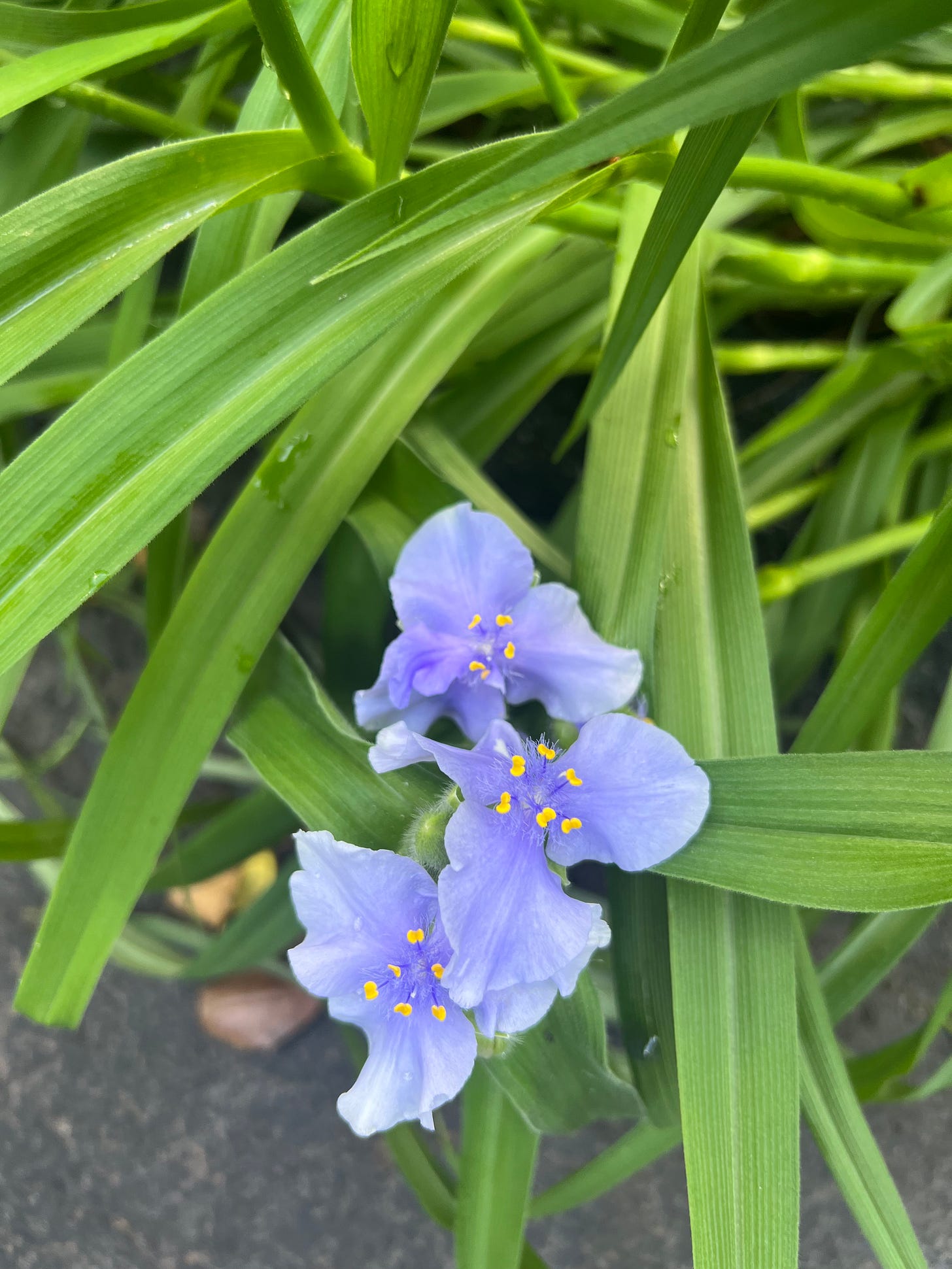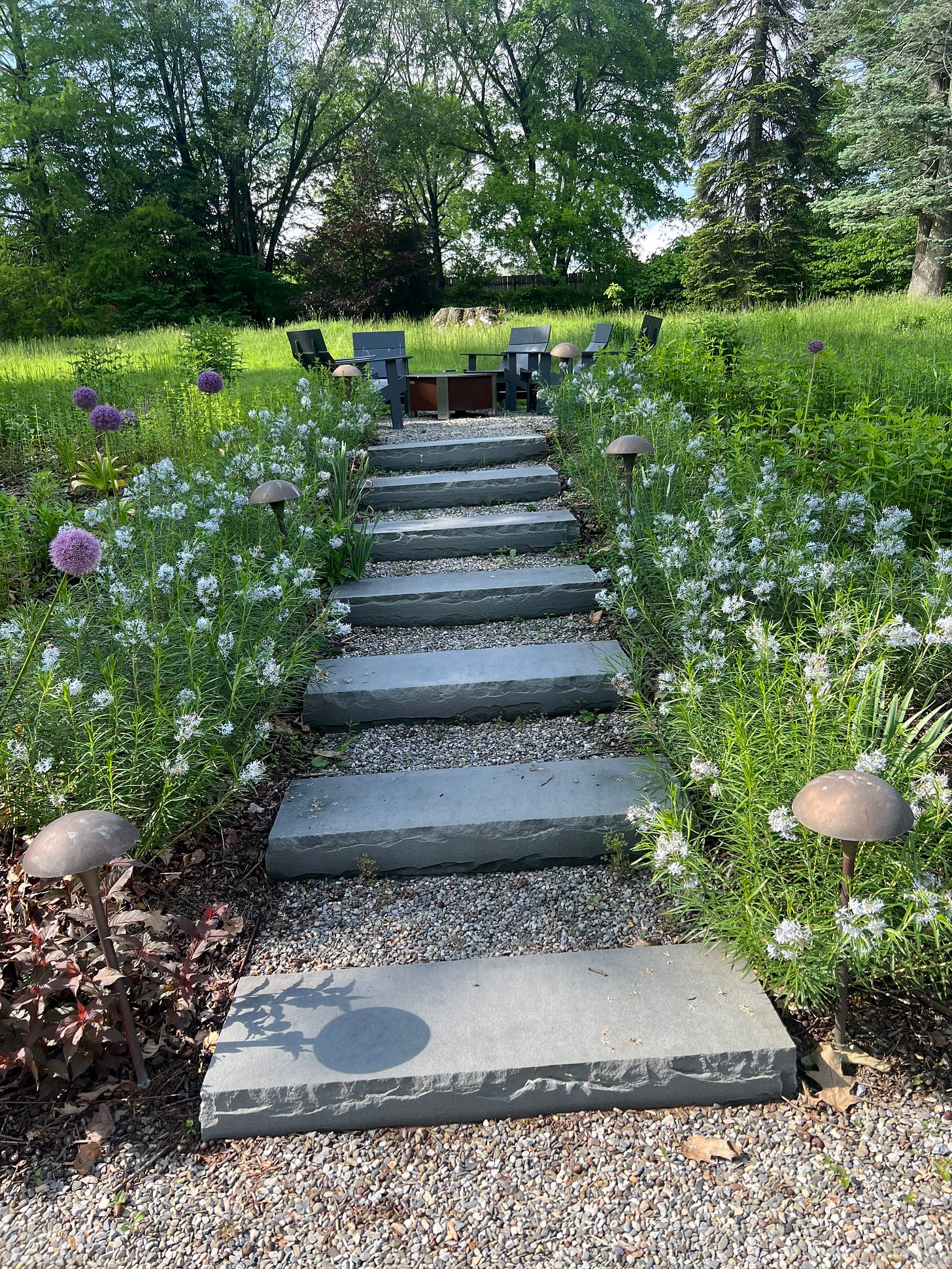Why I Love a Good Bully
Puddock Hill Journal #88: Nature’s large colonies serve a critical purpose.
A few weeks ago, I had the privilege of attending a Douglas Tallamy lecture at Mt. Cuba Center. Tallamy’s work as an entomologist at the University of Delaware and his legendary advocacy of native plants inspired us—and many others—to change our gardening ways for benefit of the natural world.
During his talk, he mentioned his opposition to the concept of No Mow May. Not the No Mow part, the May part. Tallamy is not a fan of those great ecological wastelands we create when we maintain lawns. What he further objects to is providing pollinator habitat for a single month and then snatching it away, thus increasing the odds that bees we claim to be helping will struggle.
When your lawn—and everyone else’s—gets mowed on June first, it drives the bees farther afield in search of pollen, wasting their energy and weakening them in the increasingly adverse environment we humans have manufactured. In addition (though Tallamy didn’t mention it), the high grass provides shelter and hiding places for all manner of native critters. And in the absence of mowing, valuable volunteer plants arise.
At Puddock Hill, we maintain some lawn but have a mowing scheme that attempts to encourage native meadow plants while discouraging invasives. This does require constant tweaking, but the rewards include joyful surprises and increased wildlife habitat.
Related to Tallamy’s No Mow objections, he touched upon something that has troubled me for a long time, which is the proclivity of many gardeners to plant great varieties of native plants but in sparse quantities and, as a corollary, to pull up spreading natives as “too aggressive.”
I have long suspected, and Tallamy confirms, that planting so sparsely risks exhausting specialist bees, who then must travel great distances to find enough flowers to sustain themselves. All you need do to understand the logic is watch a bumblebee move from flower to flower in a lush garden and imagine how hard it would have to work if the flowers were spaced half a mile apart.
Nature rarely scales so small as a garden bed, and I see confirmation of this throughout the wilder places at Puddock Hill:
Sensitive ferns (Onoclea sensibilis) form large colonies in the wet meadow, at the edge of the wet woods, and at the bottom of the big pond embankment, where they provide shelter for amphibians and small rodents.
Various goldenrods (Solidago spp.) grow thick in the barn meadow and the wet meadow, feasted upon by bees in late summer.
Dogbane (Apocynum) plants grow in great numbers in the wet meadow and along the edges of the wet woods, where they feed butterflies.
Jewelweed (Impatiens capensis), an annual but prolific self-seeder, carpets large swaths of the wet woods, ditches, and shadier edges of the wet meadow, providing pollen for bumblebees.
Virginia knotweed (Persicaria virginiana) forms large colonies in the east woods and above the big pond, its seeds feeding birds and small mammals.
White avens (Geum canadense) carpets the walnut woods, attracting many pollinators.
If I had the ability to count these plants individually at Puddock Hill, no doubt each species would number in the tens of thousands. This is what nature wants. Yet still there remains plenty of room for more demure natives such as New York ironweed, great blue lobelia, yarrow, primrose, Allegheny monkeyflower, swamp agrimony, and a hundred others.
Furthermore, these large native colonies often compete well against invasive plants. Viewed as bullies by some gardeners, on the contrary I consider them the vegetative equivalent of the 101st Airborne Division, storming forward to meet invaders.
When string trimming, if I see just one or two invasive plants popping up among these masses of natives, I set down the machine and pull them up, if that’s possible, or clip the noxious plants by hand as close to the ground as I can reach. My aggressive natives may fill in to shade them out.
We bought some beebalm (Monarda spp.) at the wonderful Brandywine Conservancy native plant sale. It is known to be an aggressive spreader by rhizomes as well as seeds, a real nuisance in the garden. I say, Bring it on! I plan to plant it in the wet meadow, near where we’re having a problem with invasive mugwort.
There is safety in numbers. So, while we’re putting No Mow May in the rearview mirror in favor of Mow Rarely, let’s also allow the native bullies to run riot. No bee should have to work so hard.
Most native tuliptree flowers (Liriodendron) are too high in the canopy to see up close, but the lower branches of this tree in the east woods afforded me a great look:
The native northern blue flag irises (Iris versicolor) that Pam planted a few years ago are thriving by the small pond:
Native spiderwort (Tradescantia) on the bridge loves the wet weather:
The bluestar (Amsonia spp.) that we planted last year along the garden steps has come into its own:









